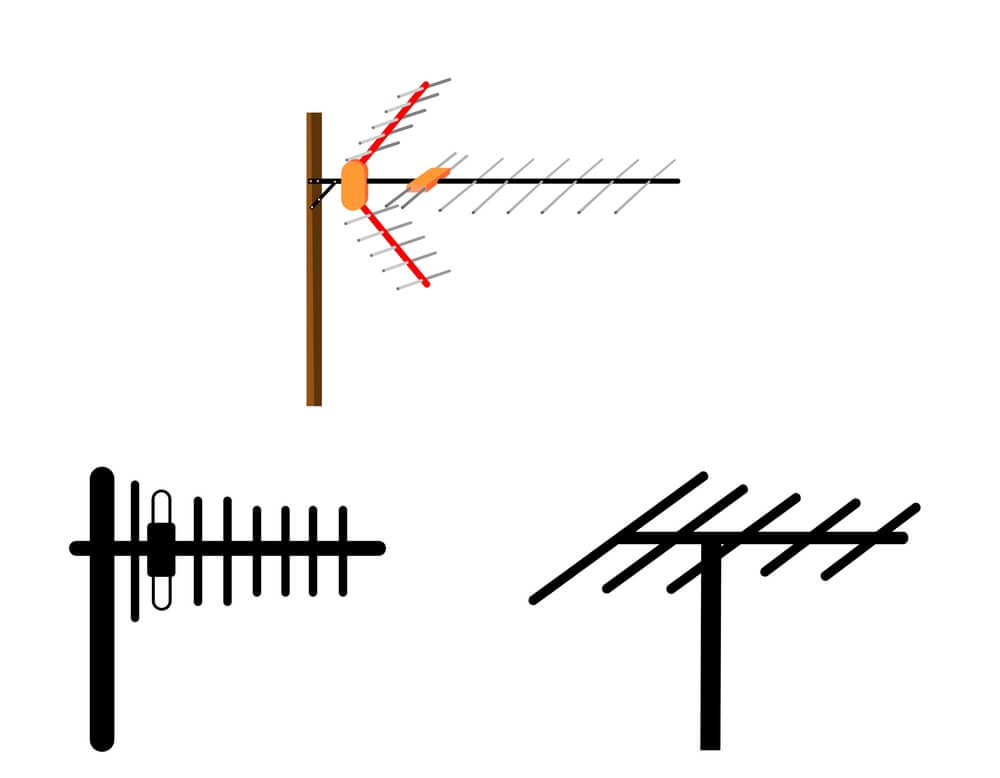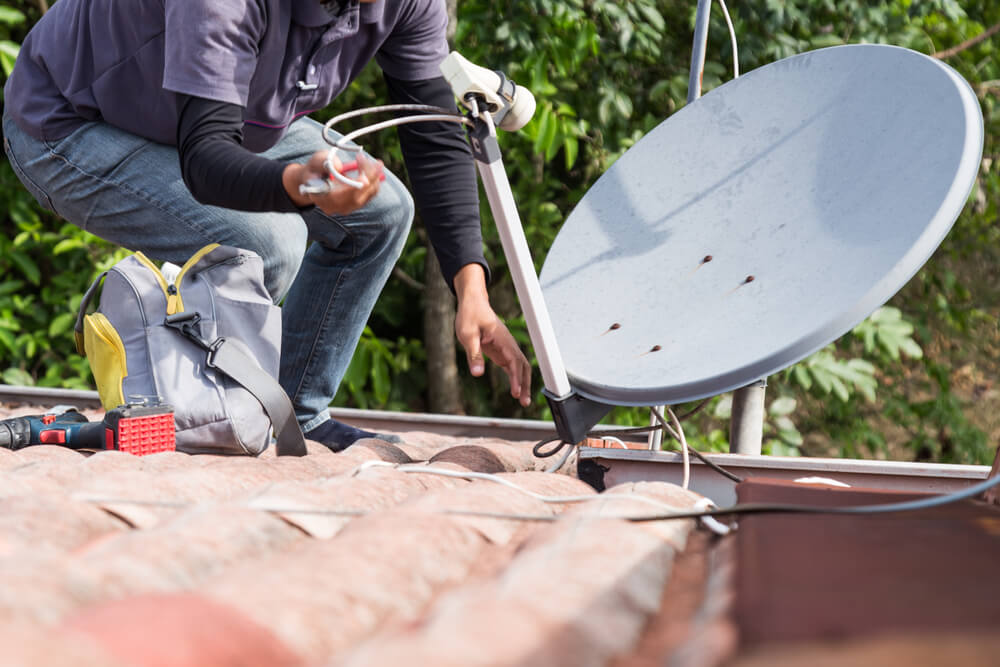Since there are so many TV antennas available, it can be quite challenging to decide on the most suitable one for my location. However, after conducting research and gaining some knowledge of the different types of antennas available in the market, you might find an ideal antenna for outstanding TV reception.
This article will describe how to choose the best TV antenna for my area, and what recommendations can be made for different uses.
What are the available different TV antennas?
Television antennas are available in the market in various shapes and sizes and they cater for some specific signal reception. They appear in numerous forms that require you a clarify their distinct types.
It has various types such as Indoor antenna, outdoor antenna, flat antenna, Yagi antenna, Omni directional antenna, and so on.
These are just a few among the numerous types of television antennas that are available in the market. The kind of antenna that is most appropriate for your home will, therefore, depend on where you live, the current signal strength of the TV networks in your area, and any barriers that may exist to the signals.
How to choose the best TV antenna for my area
However, it is important to look for the best TV antenna Australia for you to be able to receive a good signal.
Check Where You Live: Do your best to discover the location of the broadcast towers near your house. Information of this kind can be obtained through tools such as TV Fool or Antenna Web.
Look at Your Surroundings: Check whether such tall barriers as mountains, skyscrapers, and even trees should be considered a reason for signal obstruction.
Choose the Right Antenna Type: Depending on the strength of the signals in your area, whether the area is provided with any barriers or not, you may require either the indoor antenna in case of strong signals or the outdoor antenna when the signals are weak or there are barriers which obstruct the transmission of signals.
Pick the Right Range: Antennas are available in various bands and hence choose the range that is appropriate given the distance to the broadcast towers. Depending on the distance, you may need a long range of the antenna to cover the area you need.
Think About Direction: This is because if all the local TV stations are in one direction the directional type of antenna is appropriate to be used to point at the towers rather than one that receives signals from all directions.
Check Reviews: Look for compact models with high ratings and features such as signal boosting or noise rejection if you live in an area with poor signals or frequently jammed ones.
Get Help if You Need It: If you have challenges in choosing the antenna or even if you do not remember the procedure of installation, be prepared to call an expert installer. They can see your position and thus provide you with a proper antenna and installation advice.
Finally, you get to know where the best digital TV antenna Australia for your location is so that you can get clear TV signals.
Specific Types of TV Antennas for Various Areas
These characteristics might be region-dependent and geographically sensitive depending on the locations of the antennas.
Suburban areas
These are generally placed in regions that are even more distant from the broadcast towers and this can lead to the reception of fewer television broadcasts. Suburban landscape barriers like hills or trees can also hinder your reception of a clear TV signal, depending on your azimuth towards the broadcasting towers.
Antenna Suggestions: The roof or attic-mounted outdoor TV antennas are preferred in suburban areas many times. It is advised to take those with higher gain to have a better reception of the signal.
Urban areas
Regarding the cities, the high rises can cause interference, which prevents the transmission signals from getting to your antenna. This way, the signals can be very low and the television reception can be very low as well.
Further, the areas with dense populations are characterized by many houses with antennas that result in congestion and interference, which reduces the quality of the TV signal.
This is because the available space and the surroundings in an urban area are limited and often filled with obstacles which makes it tiresome, and time-consuming to look for a good spot where your antenna could get better reception.
Antenna Suggestions: Indoor TV Antenna are best suited to high signal positions. Choose models equipped with signal boosters for enhanced signal reception.
Coastal areas
Such areas have their special challenges which result from saltwater intrusion into the signal, which interferes with the quality of the TV signal. Since the coast exposes the antenna to strong winds and high levels of salt spray, it does not take long to penetrate the barrier and deny the TV reception.
Antenna Suggestions: Coastal marine antennas that offer protection against the effects of saltwater inference as well as operating in difficult coastal climate conditions.
Rural areas
In these areas, the separation from the transmission towers can cause poor TV signals that can only be received with high-gain antennas. Besides, the density of population in the rural areas is low and hence, there are few TV broadcast towers, and this makes it difficult for some families to receive signals that have a poor quality of reception.
Antenna Suggestions: High-gain long-range outdoor antennas will be required to establish the network. As for the receiver side, directional antennas can be pointed towards the broadcast towers, which would improve the reception.
Mountainous areas
The mountains are capable of interrupting the signal and this may lead to weakness or signal’s inability to reach any point. Furthermore, the interweaving of the signals that emanate off mountains leads to the complication called multipath where the signals get received by the antenna at slightly different times which negatively affects the quality of the signal that is received and displayed on the TV screen.
Antenna Suggestions: High-gain signal antenna circuits with signal amplifiers are capable of lending a hand in case of signal blockage and interference.
Remote areas
Such regions normally do not get television broadcast towers and as such the waves of television signals could be very low. Further, the sparse population in remote areas transforms to a fewer number of households to share the dish with thereby revealing high costs to the individuals willing to enhance the TV signal.
Antenna Suggestions: Satellite dishes to provide a stable TV signal to people in rural areas.
To address these issues of TV antennas in various locations, you may require unique measures such as high-gain TV antennas or signal repeaters. To overcome the obstacles in a particular area, it is essential to choose the correct antenna after conducting some rigorous investigations.
Conclusion
If you want to choose the best tv antenna for my area, some important factors should be considered including signal strength, antenna range, directionality, gain, and interferences. By identifying these factors and selecting the most appropriate antenna, it is possible to have the best reception of the TV signals in the given area.
It should also be noted that in many cases, you can simply revisit the site and request additional information or clarification- let’s say the question is what is the best TV antenna for my area? One must also ensure that they seek recommendations from the antenna experts so that they select the most appropriate TV antenna Melbourne has to offer.








